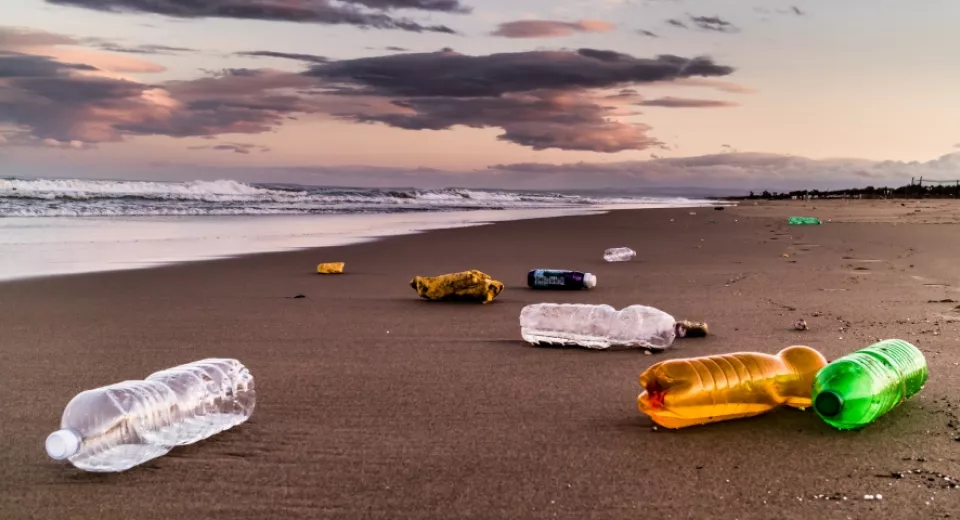Ocean pollution & waste solutions

Plastic in our seas and rivers: measurement for knowledge
The sea is a source of recreation, energy and food. However, we do not show a lot of gratitude in return. Think, for instance, of the plastic soup in the oceans. The blue economy has to come up with sustainable solutions to these challenges by means of innovative technologies such as big data, artificial intelligence, augmented reality (AR) and drones. And with support from Blue Cluster!
Approximately five to twelve million tonnes of plastic waste ends up in our oceans annually. This is a huge problem: not only does marine wildlife get entangled in it, plastic also breaks down agonisingly slowly. In addition, we also ingest these materials through the seafood we eat.
Tackling this problem requires a two-fold approach. On the one hand, we need to avoid that plastic ends up in the water (for instance by making consumers aware of the issue, or through solutions at the source), and on the other hand we need to develop methods for efficient waste removal.
Better understanding the spread of plastic
Before we can remove plastic waste, we first need to know how much plastic flows to the sea. Only then will we be able to accurately assess the required efforts. New and innovative technologies can be used to gather these data – as is also the case in other domains of the blue economy.

A nice example is the project titled PLUXIN, which stands for Plastic Flux for Innovation and Business Opportunities in Flanders. It is a partnership between Flemish knowledge institutions in dialogue with entrepreneurs and supported by Blue Cluster. The project partners assess how much plastic there is in the seas and oceans, and identify the ports and rivers from where the plastic comes as well as the times when it ends up in the sea.
The aim of all this is to develop new distribution models for plastics on the basis of the know-how from existing observation methods. The data from these models can be used to develop computer models that enable us to map the plastic flow and determine the distribution of plastic across the water. This way, we can find out where plastic accumulates so as to intervene more quickly and efficiently.
From river to sea
It is no easy feat to determine exactly how much plastic there is in our rivers, since only a fraction floats on the surface. After all, plastic moves both horizontally and vertically through the water. For a correct assessment of the degree of pollution, researchers study and analyse reflections in the water of rivers, for instance.
By the way, a pilot study as to floating waste in the river Lys revealed an average of 30,000 items per km². Most of this waste eventually flows to the sea. 5% of this waste ends up on the beach, 1% floats on the surface of the sea and 94% sinks to the seabed. So what we see with our own eyes is only a fraction of the real pollution.

Processing into sustainable products
With the information collected during the PLUXIN project, the project partners eventually aim to set up new interdisciplinary innovation projects which, in turn, should lead to the creation of economic and societal value.
Flemish companies and knowledge institutions active in marine and riverine construction, monitoring, decontamination and waste processing can thus develop solutions to address the problem of plastic pollution upstream: removal of plastic from the water and sediments by means of commercial clean-up initiatives before it ends up in the sea.
Within this context, partnerships with companies are specifically considered. For example, new separation techniques can be developed for dredging work, making it possible to separate plastic from sediment, so that the former does not end up in the sea.
Plastic thus collected can then be processed unto sustainable products that re-enter the market. A lot of Belgian companies have already invested in such 'new materials'. In addition, this has a positive impact on our CO2 footprint.